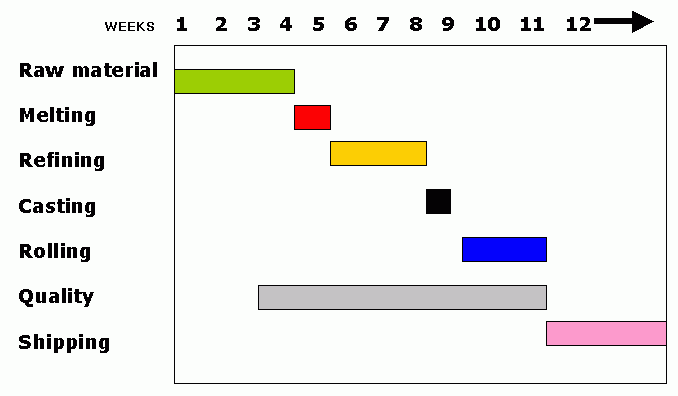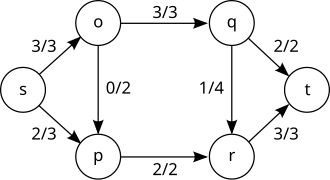Algorithms Overview
This section is about what computer programs (or humans with pencil and paper and a lot of work) can do with Valueflows economic networks once they are constructed on the Web or in a database.
Network-based algorithms
- Dependent Demand constructs schedules for operational economic networks from recipes
- Many other scheduling algorithms can be used over the same recipes.
- Gantt charts are a popular network schedule visualization.

- Critical Path is another scheduling algorithm that analyzes a network of processes to figure out the bottlenecks, the processes that need special attention.
- Value Rollups summarize the total value of all inputs to the resulting output from a recipe.
- Value Equations determine how income should be distributed according to contributions to a deliverable item.
- Track and Trace follow the path of a resource forwards (to where it went) and backwards (where it came from, and what other resources went into it).
- Provenance is like Trace, focusing on the path of a resource and all of the other resources that went into it.
- Cash Flow is mostly about money, but could also apply to other resources, looking at the inflows and outflows on a timeline, historical in the past, forecasted in the future.
-
Economic and Ecosystem Analysis:
-
Network Flows is a general name for all of those algorithms and many many more. See Flow Networks on Wikipedia and elsewhere.
There are similarities and differences among the algorithms:
- Scheduling algorithms and cash flows use time-phasing: placing planned or reported events on a timeline.
- Dependent Demand schedules backwards from an end date; Critical Path schedules forwards from a start date.
- Dependent Demand does an explosion: breaking down the end resource of a recipe into a tree of components and processes.
- Value Rollups do an implosion: summarizing all the inputs of the exploded tree of components and processes into a total value.
- The Economic and Ecosystem algorithms use Input-Process-Output Models
- All of those algorithms work on flow networks, otherwise known as directed graphs, composed of nodes and links between them.

